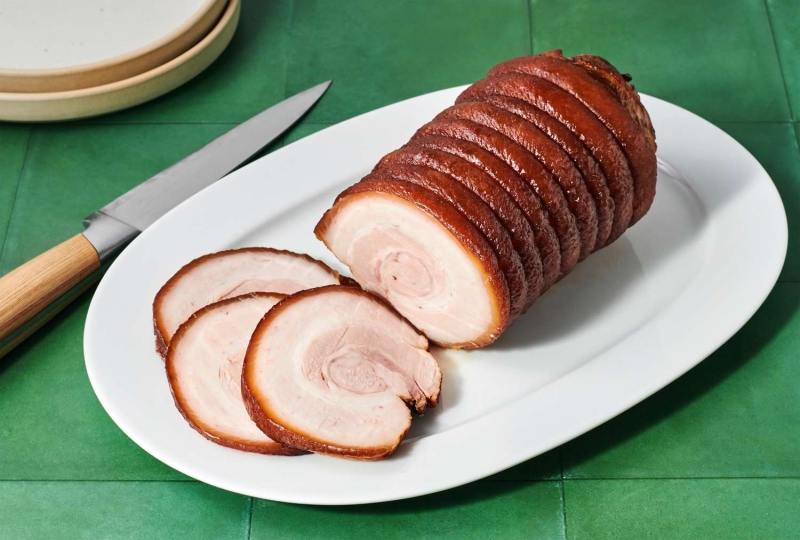It’s more than a ramen topper
Prep: 50 mins
Cook: 2 hrs 15 mins
Cooling/Chilling: 15 hrs 50 mins
Total: 18 hrs 55 mins
Servings: 6 to 8
Yield: 2 to 2 1/2 pounds
Chashu, also called yakibuta and nibuta, is a Japanese braised pork dish. It’s that savory, fatty, and juicy round slice of meat that you often find on top of ramen. Chashu is usually the first bite ramen lovers take before picking up the noodles or sipping the broth.
How to Use Chashu
However, chashu is much more than a popular ramen topping. It is an incredibly versatile and delicious dish to prepare at home. It is my ham alternative. It can be a weeknight okazu—the main dish on the family table—enjoyed over steamed rice, or served with vegetables.
I keep leftover chashu on standby in the freezer and dice it into my fried rice along with frozen peas and scallions like my mother used to do, or use it as a filling in sandos (Japanese sandwiches). Even chashu’s tare (pronounced tah-reh), the braising sauce, is too good to discard. Use it as a marinade for hard-boiled eggs, a dipping sauce, or to season ramen broth.
The Origins of Chashu
Chashu is derived from char siu, a barbecued pork made from pork loin and shoulder, which was introduced to Japan from China in the late 19th century. Char siu sounds similar to chashu but the similarity stops there. Like many dishes that came from abroad, Japanese people adapted char siu to suit their palates and cooking practices.
The Difference Between Chashu and Char Siu
Char siu is often seasoned with honey, red fermented bean curd, soy sauce, hoisin sauce, wine, and five-spice powder. The meat is then skewered and roasted, and the end result is the distinct red-colored meat that you see hanging in the windows of many Chinese restaurants.
In contrast, chashu is made preferably with fatty pork cuts like belly and shoulder and is seasoned with soy sauce, sake, mirin, sugar, salt, ginger, scallions, dried shiitake mushrooms, kombu seaweed, and chili pepper. The meat is slowly simmered in a sweet and savory broth that thickens into a flavorful sauce.
Tips for Making Chashu
- Pork belly is the most popular cut for making chashu. You can find pork belly at Asian markets, skinless or skin-on. Or you may have to order it through your butcher. Sometimes American markets only offer frozen pork belly, so allow time for defrosting overnight in the fridge.
- Both skinless and skin-on varieties will work for this recipe but for the skin-on variety, you will need to puncture the skin with a knife before cooking to allow the seasonings to penetrate the meat and the fat. Look for a slab that is close to even distribution of meat to fat and of an even thickness. I usually work with a pork belly between 1 and 3 pounds in weight depending on how many people I plan to feed. The larger the slab, the longer it will take to cook the meat.
- Right after cooking, the pork will be so tender and juicy that it will be hard to slice thinly, but my ramen students love the succulent meat and don’t mind thick slices.
«Although this chashu pork recipe is a time commitment, it’s definitely worth it. There’s nothing quite like the savory-sweet flavor of tender skin-on pork belly, and the remaining tare makes the most delicious marinade for jammy eggs or as a flavorful topping for rice. Both the pork and sauce freeze well, too!» —Diana Andrews
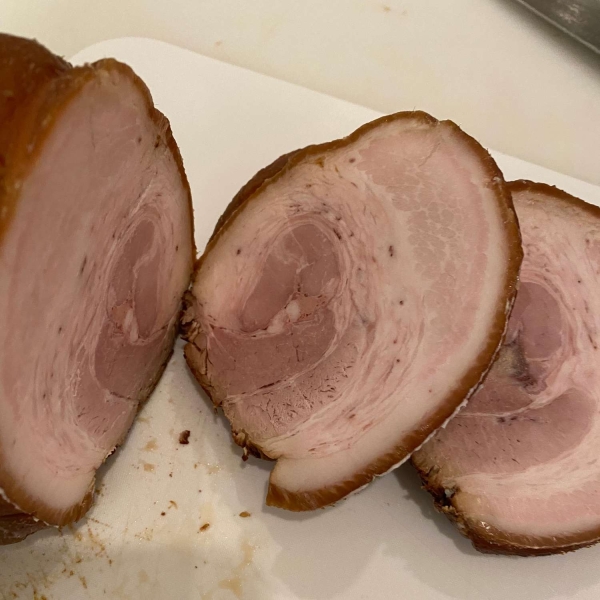
A Note From Our Recipe Tester
Ingredients
-
2 to 2 1/2 pound slab skin-on pork belly
-
2 tablespoons neutral oil, such as canola
-
3 cups water
-
1 cup sake
-
3/4 cup soy sauce
-
3/4 cup mirin
-
2 tablespoons lightly packed brown sugar
-
2 large dried shiitake mushrooms, rehydrated overnight with 1 cup of water (reserve the soaking liquid)
-
3 large green onions, cut into 2-inch pieces
-
One 2 by 2-inch piece unpeeled ginger (about 2 ounces), cut into 1/4-inch slices
-
3 large cloves garlic, sliced
-
2 small dried red chilies, such as Takanotsume, Thai red chilies, or Guntar Saanam
Steps to Make It
-
Gather the ingredients.
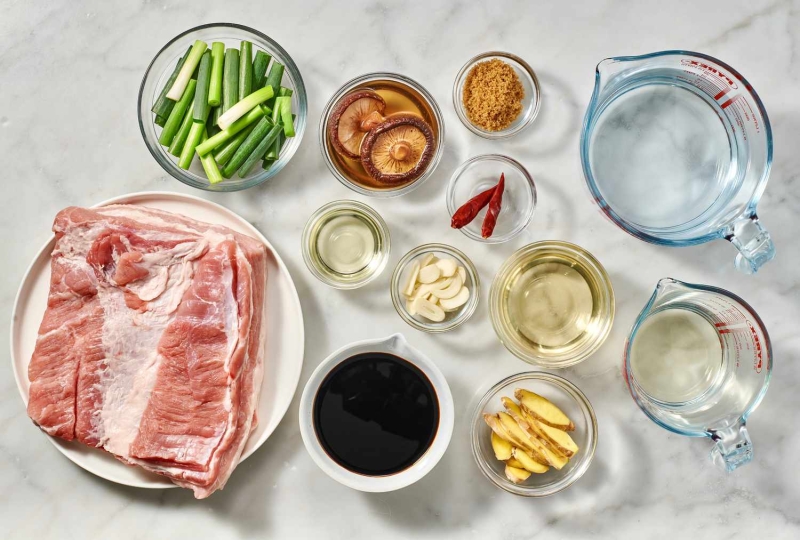
-
Puncture the skin of the pork all over with a sharp knife, being careful not to cut into the meat.
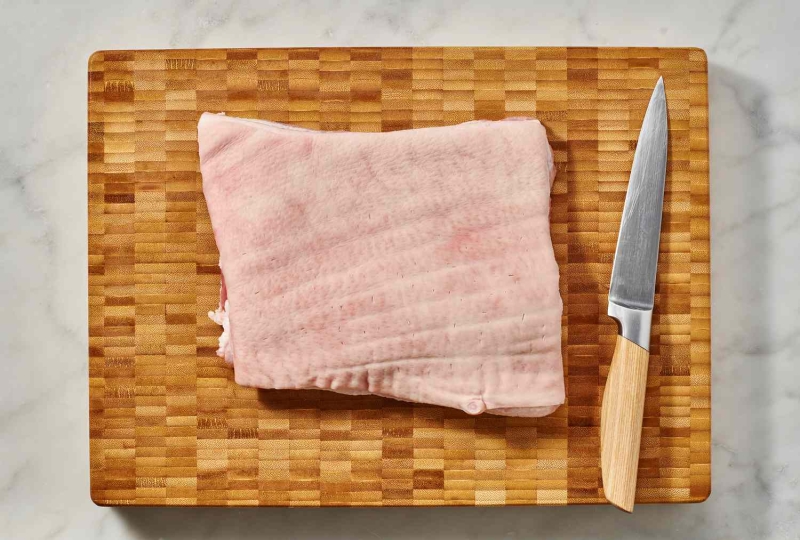
-
Turn the pork over and score the meat lightly, no more than 1/4-inch in depth in 1-inch intervals. Pat the pork belly with paper towels or a clean kitchen towel to dry the surface.
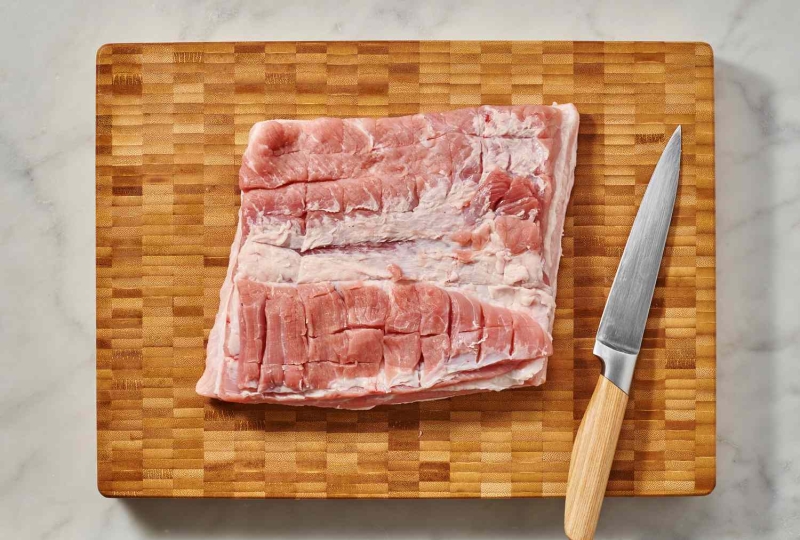
-
Lay the meat skin-side down on a cutting board. Starting from either of the longer edges, tightly roll the meat away from you and over on itself (skin side out).
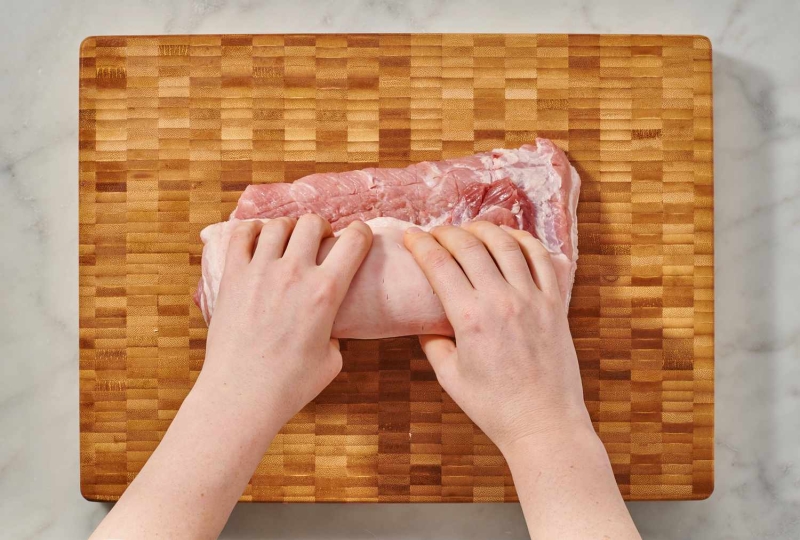
-
Now secure the roll with kitchen twine. Cut several separate lengths of string and use them to tie the rolled pork at 3/4-inch intervals so it will keep its shape. Let the meat sit at room temperature for 30 minutes.
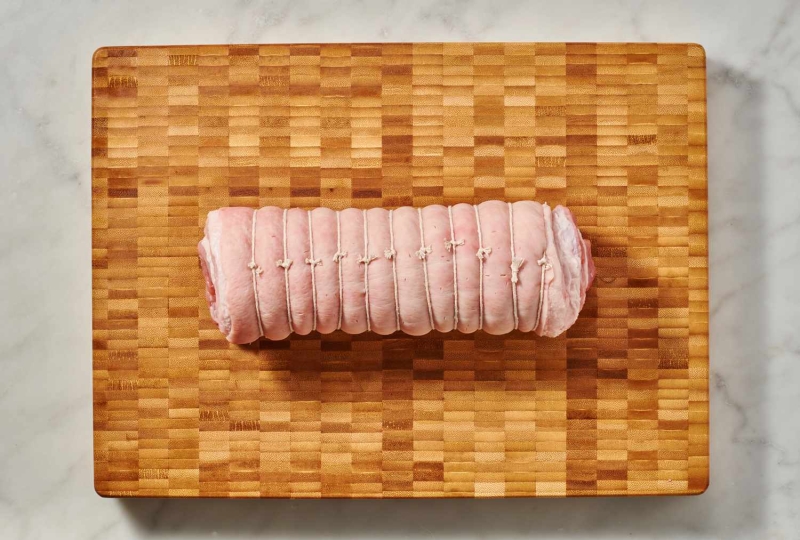
-
Heat the oil in a large Dutch oven or other heavy-duty pot over medium heat until the oil shimmers. Sear the pork belly until golden on all sides, 12 to 15 minutes. Rotate the meat roll periodically with tongs to avoid burning. When the meat is uniformly golden, remove from heat and discard the fat in the pan.

-
Wipe out the Dutch oven with a paper towel. Return the meat to the pot. Add the water, sake, soy sauce, mirin, and brown sugar and stir. Add the shiitakes and their soaking liquid, green onions, ginger, garlic, and chiles. There should be enough liquid to go 3/4 of the way up the sides of the meat. Add more water or sake (another splash or two) to bring the liquid up to that level, if needed.
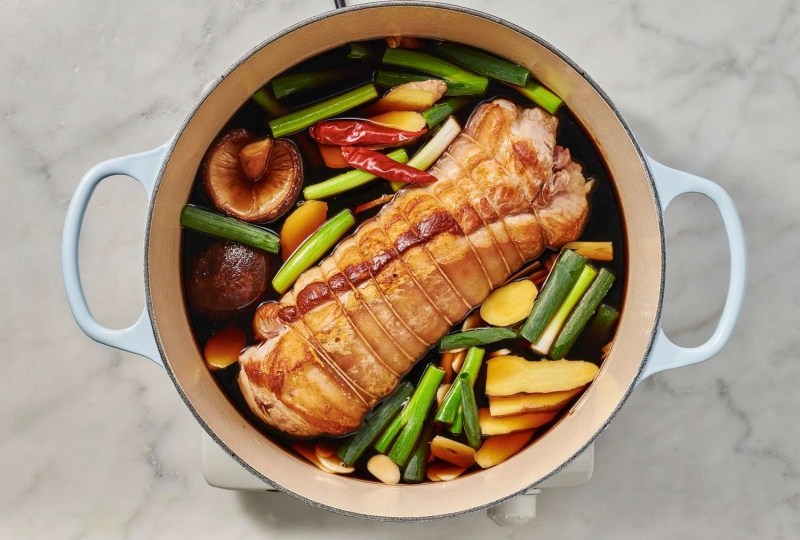
-
Bring to a boil over high heat. Skim off any surface scum with a spoon and discard.
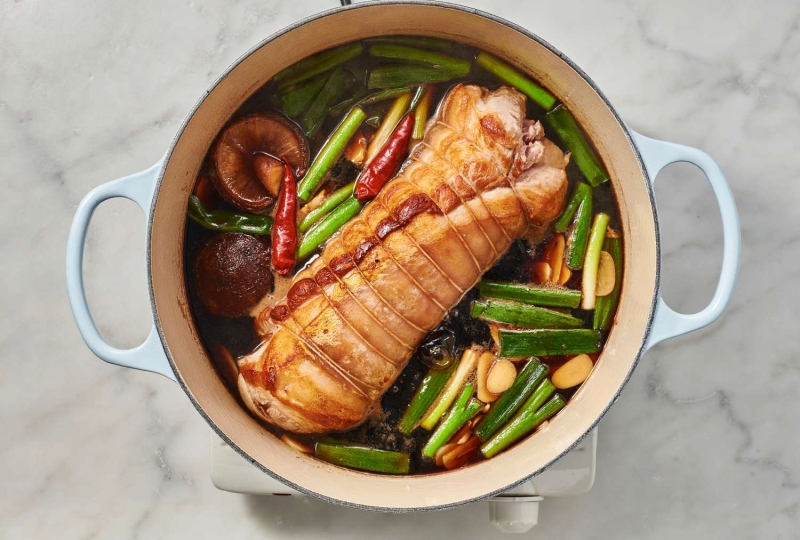
-
Turn the heat down to medium low to maintain a slow simmer. Cover the Dutch oven with an inner lid made out of aluminum foil with holes poked in it. (I use the end of chopsticks to make holes to allow the steam to escape). This is to keep the surface of the meat from getting dried out.

-
Cook, covered, for about 2 hours, turning the meat every 15 minutes, until the braising sauce (tare), becomes syrupy and the meat is fork-tender. The cooking time will depend on the size of your pot and meat. Remove the pot from the heat and let the meat come to room temperature in the tare, about 3 hours.
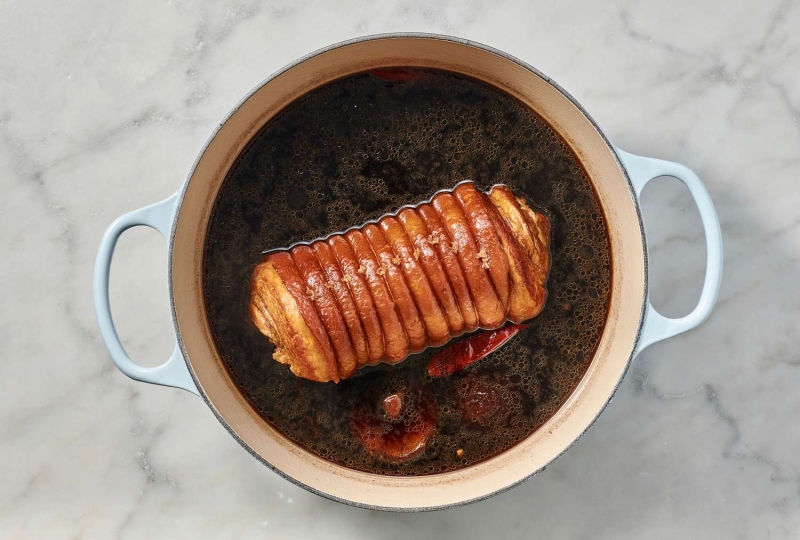
-
Remove the meat from the tare. Strain the tare through a medium mesh strainer (discard the contents of the strainer) and save it to marinate eggs or season ramen broth.
You can serve the chashu pork after it cools to room temperature, but it is best to let the meat rest in the refrigerator overnight to make it easier to cut thin slices (about 1/4-inch thick).
To rewarm the meat, which will be fatty looking, simply put it in the heated broth or briefly pan fry it for a crisp alternative.
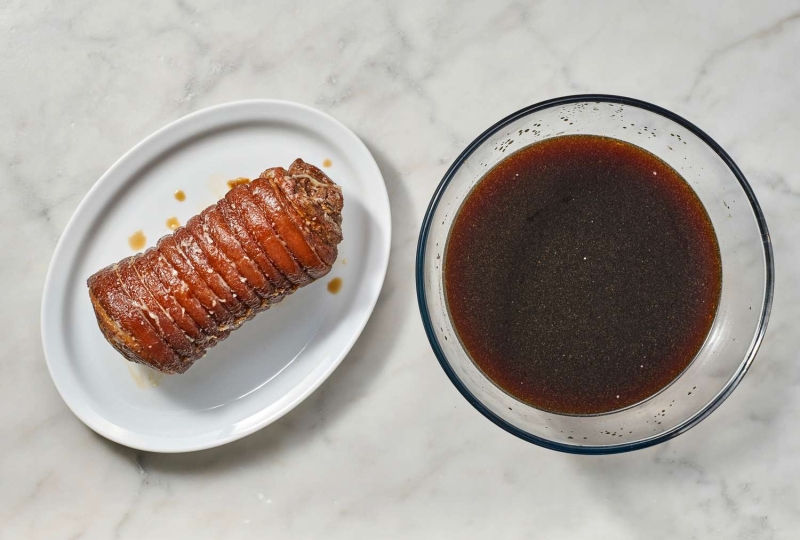
How to Store
Store chashu in an airtight container in the refrigerator for up to 5 days.
You can freeze chashu for up to three months. Wrap the meat in aluminum foil and then put it in a freezer bag or double wrap it in plastic wrap, label and date it, and then put it in the freezer. Thaw overnight in the refrigerator before slicing and reheating.
How to Tie the Pork Belly with a “Butcher’s Knot”
Tying the pork belly into a roll helps hold the shape and its juices and makes slicing easier. You can have your butcher tie it for you, or do it yourself. I use a slip knot to tie the meat. A slip knot is an adjustable knot that can be made small or big, loose or tight.
Lay the rolled meat on a cutting board. Do not cut the kitchen twine, leave it attached to the ball. You can place the ball of twine in a bowl so it doesn’t roll all over the place. Starting at one end of the roll, slip the end of the twine around the meat and tie a tight knot no more than 1 inch away from the end of the roll.
Now, twist the twine to make a loop and pass it around the meat. Pull the twine to tighten it around the meat (you are not knotting the twine, just tightening it). Repeat this looping and tightening process at 3/4-inch intervals. If this process feels too tedious, you can cut several separate lengths of string, individually knotting each one, rather than using one continuous string and a butcher’s knot.
How to Use Chashu Tare
Prepare Nitamago (also known as Ajitsuke Tamago) — Marinated Soft-Boiled Eggs
2 cups water or broth (vegetable, chicken, or meat broth)
1/2 cup chashu tare
6 eggs, left out at room temperature for 1 hour
- Combine the water or broth and chashu tare in a food storage container with a tight-fitting lid. Set aside.
- To cook the eggs, lower them into a large saucepan of boiling water and cook over high heat for 7 minutes, mixing the eggs gently with a spatula once or twice.
- Remove the pan from the heat and drain the water. Place the eggs in a bowl of ice water and let them cool for 5 minutes.
- Peel the eggs and put them in the container with the marinade. Leave the eggs in the marinade overnight or up to 3 days in the refrigerator. Slice them in half to serve.
| Nutrition Facts | |
|---|---|
| Servings: 6 to 8 | |
| Amount per serving | |
| Calories | 376 |
| % Daily Value* | |
| Total Fat 26g | 34% |
| Saturated Fat 9g | 45% |
| Cholesterol 95mg | 32% |
| Sodium 437mg | 19% |
| Total Carbohydrate 4g | 1% |
| Dietary Fiber 0g | 0% |
| Total Sugars 3g | |
| Protein 27g | |
| Vitamin C 0mg | 0% |
| Calcium 55mg | 4% |
| Iron 1mg | 6% |
| Potassium 302mg | 6% |
| *The % Daily Value (DV) tells you how much a nutrient in a food serving contributes to a daily diet. 2,000 calories a day is used for general nutrition advice. | |
